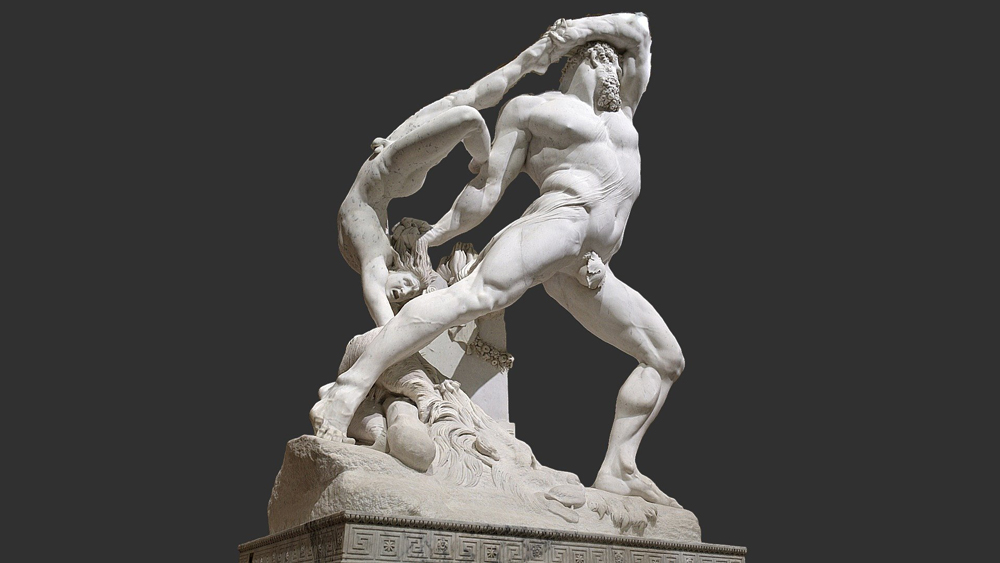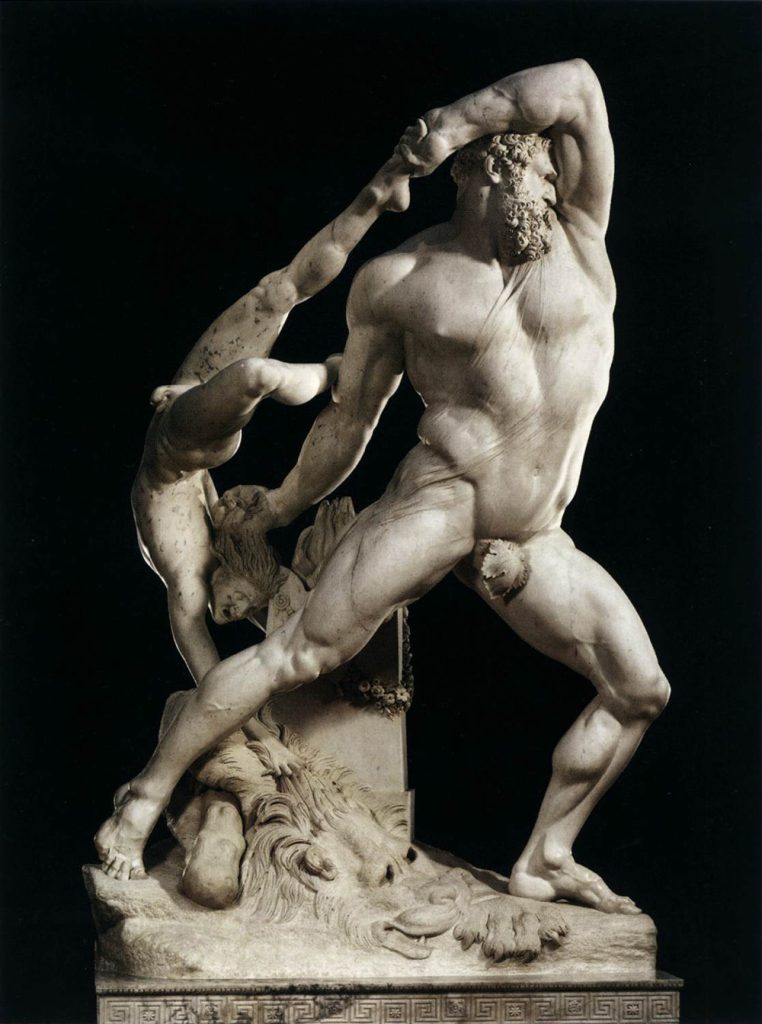Unleashing the Power: Antonio Canova’s Hercules and Lichas
In the realm of sculpture, few artists have achieved the level of mastery and acclaim that Antonio Canova did. One of his most celebrated works, “Hercules and Lichas,” is a true triumph of his skill and creativity. This magnificent sculpture brings to life the ancient legends of Hercules and his trusted companion, Lichas, in a mesmerizing display of power and emotion. Let us delve into the world of Canova’s masterpiece and explore the mythical encounter that captivates viewers to this day.
A Triumph of Sculpture: Reviving Ancient Legends in Marble
Antonio Canova’s “Hercules and Lichas” stands as a testament to the artist’s ability to breathe life into cold, unyielding marble. The sculpture depicts the mighty Hercules, known for his superhuman strength, caught in a moment of fury as he lifts Lichas high above his head. The details are astonishing, from the texture of their muscles to the expression of pain on Lichas’ face. Canova’s technical prowess is evident in every chiseled contour, as he transforms the rigid stone into a dynamic scene that pulsates with energy.
Canova’s choice of subject matter is equally impressive. This story is a popular theme in Greek mythology, symbolizing the tragic consequences of disregarding the gods’ wrath. Lichas, a faithful servant to Hercules, inadvertently brings about his own demise by presenting the hero with a poisoned garment. Canova’s sculpture captures the pivotal moment when Hercules, consumed by rage and betrayal, takes revenge on Lichas. The sculpture immortalizes this ancient legend, reminding viewers of the power and consequences associated with hubris.
Exploring the Mythical Encounter: The Joy of Canova’s Masterpiece
Viewing Canova’s “Hercules and Lichas” is a truly immersive experience that transports viewers into the heart of the mythical encounter. The interplay between the two figures ignites a range of emotions, from awe at Hercules’ god-like strength to sympathy for the doomed Lichas. The exaggerated proportions of the characters add to the drama, emphasizing the sheer power and force at play. Canova’s meticulous attention to detail, such as the veins pulsating in Hercules’ bulging arms and the folds of Lichas’ clothing, further enhances the sculpture’s realism.
The joy of Canova’s masterpiece lies not only in its technical brilliance but also in its ability to convey a narrative. The sculpture invites viewers to step into the world of ancient mythology, engaging them in a tale of heroism, betrayal, and ultimately, tragedy. Canova’s skillful manipulation of marble transforms a static material into a dynamic narrative, allowing us to appreciate the power and beauty of his art.
Epilogue
It is a testament to the artist’s mastery and creativity. Through his skillful manipulation of marble, he brings to life the mythical encounter between Hercules and Lichas, captivating viewers with its power and emotion. This triumph of sculpture not only revives ancient legends but also immerses us in a world of heroism, betrayal, and the consequences of pride. Canova’s masterpiece continues to captivate audiences, reminding us of the timeless appeal and enduring beauty of classical mythology.



